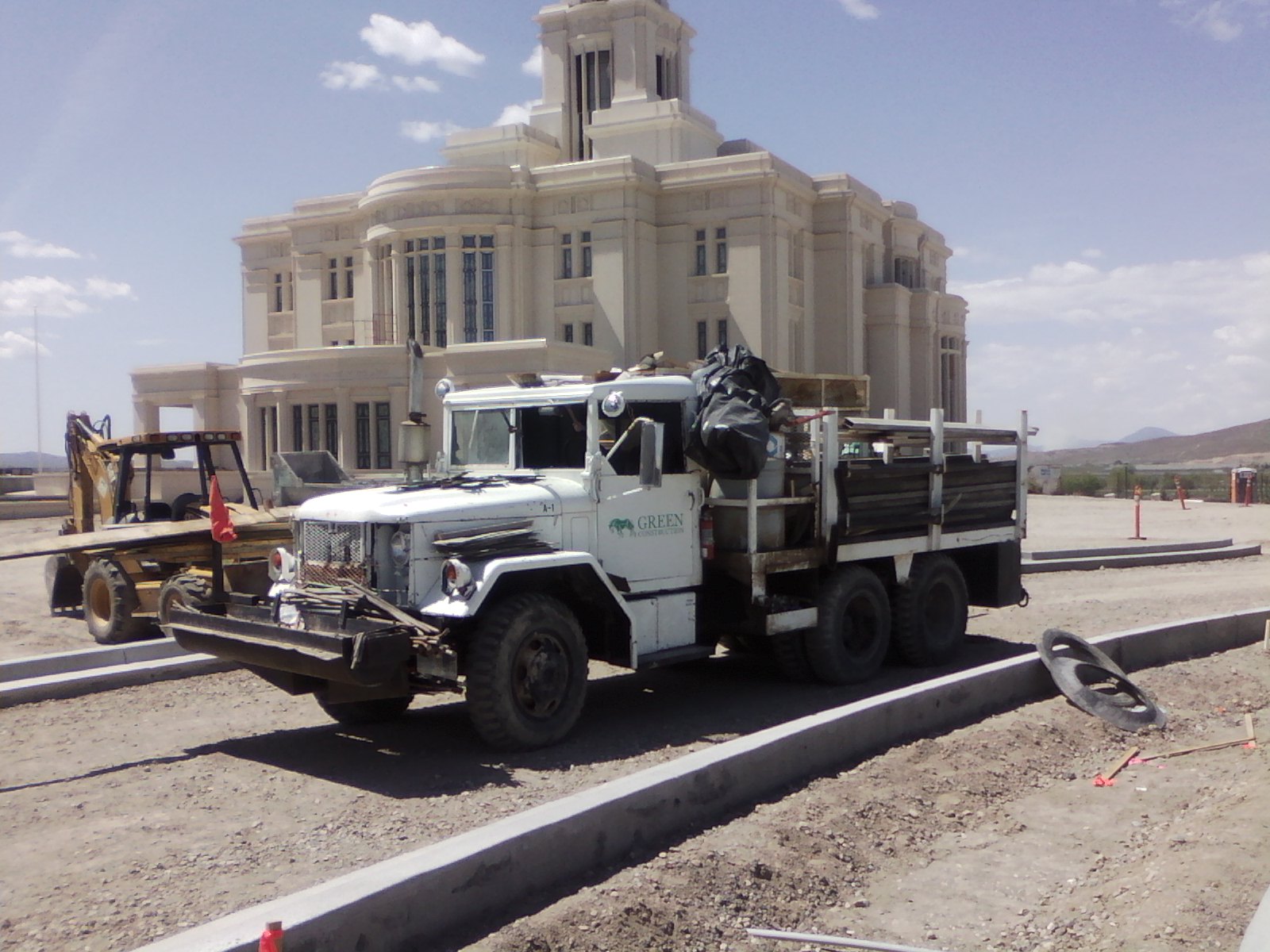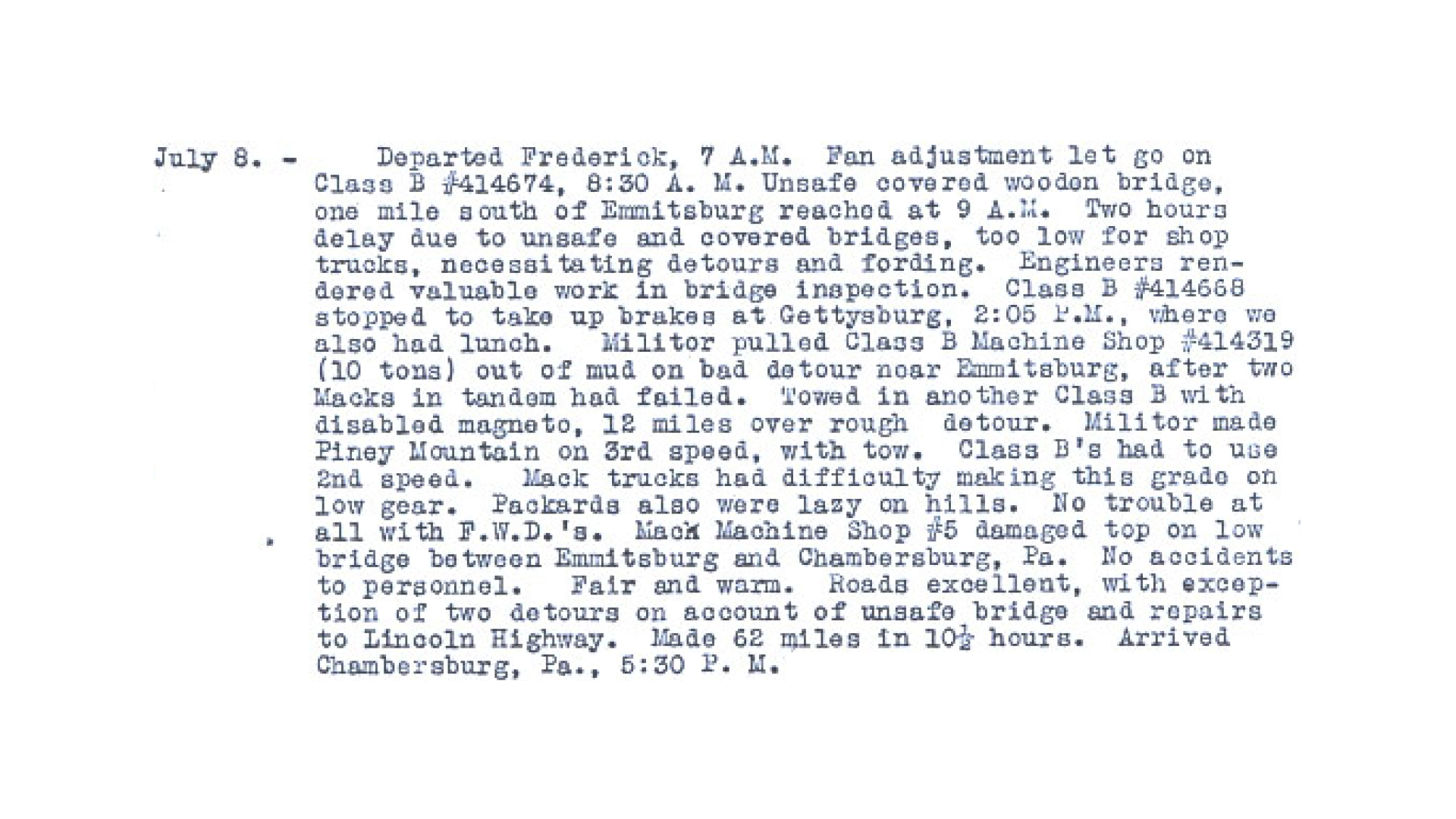Page 6 of 6
Re: A look at one of the early repalcements for the horse
Posted: Tue Oct 07, 2014 11:22 am
by Reese Williams
Coming a bit late to this, but re the BMW bikes. One of the things that made them so useful to the Wehrmacht was that both the rear wheel and the side-car wheel were driven. They were shaft drive with a differential at the rear. I've seen comments from Afrika Korps vets that said they had better traction in the sand than the trucks then in use. BMW and Zundapp made 750CC motorcycles. That was a pretty bike bike in 1940. The British military bikes were all 250-350-500 cc. I think only the Harleys were even close in size.
My understanding is that the Ural bikes were born when the Russians dismantled the BMW factory and hauled it back to Mother Russia. Many years later the equipment was sold to the Chinese.
Re: A look at one of the early repalcements for the horse
Posted: Tue Oct 07, 2014 8:22 pm
by Couvi
Didn't the BMWs also have a reverse gear?
Re: A look at one of the early repalcements for the horse
Posted: Mon Oct 20, 2014 10:16 am
by JV Puleo
I also remember reading somewhere that the BMWs cost about 4 times as much to build as a jeep did... not a very clever use of resources.
Re: A look at one of the early repalcements for the horse
Posted: Mon Oct 20, 2014 11:16 am
by Pat Holscher
JV Puleo wrote:I also remember reading somewhere that the BMWs cost about 4 times as much to build as a jeep did... not a very clever use of resources.
That almost characterizes the German approach to production during World War Two. With an industrial capacity that was significant, but taxed and under stress from the very beginning*, rather than standardize on one single simple thing in any one category, they nearly always came up with a multiplicity to types, some of which were monuments to complication. It isn't that their designs were bad, they weren't, but rather for a country that had no real room for production expansion, they were often very complicated and there a bunch of different varieties. Even some of the really celebrated German items, such as their late war heavy and medium tanks, probably should never have been made as they only served to take up resources that would have been better used on an existing, simple, design.
*By way of a footnote, I heard some time ago that British production capacity actually rivaled German capacity in the 1939-1940 time frame, contrary to the general myth. That's significant in that with a major undefeated rival, the Germans shouldn't have been messing around with complicated production, let alone invading a neighbor with a huge production capacity.
Re: A look at one of the early repalcements for the horse
Posted: Mon Oct 20, 2014 11:21 am
by Pat Holscher
On U.S. Jeeps of that vintage, I don't doubt they were cheaper. I owned a CJ2A once and it was a stunningly simple car. It was also pretty clear that Willys hadn't designed it to really last for a long time.
My suspicion is that the BMW motorcycle was a typical German motor vehicle of the time. Built to last the ages, a beautiful civilian design, and originally marketed to a population that used a lot of motorcycles because European cars of the time were very pricey and not really affordable for the average person. By extension, the BMW wasn't cheap either, just cheaper than a Mercedes or whatever.
Re: A look at one of the early repalcements for the horse
Posted: Tue Apr 14, 2015 8:37 am
by Pat Holscher
Harvard Military Motorcycle Club, 1915-20.
Re: A look at one of the early repalcements for the horse
Posted: Tue Apr 14, 2015 7:35 pm
by JV Puleo
I had a pre-War BMW motorcycle. I think the Model was R66 and oddly enough it came from India and had Lucas electrics. It was nicely made but not, to my mind wildly better than many of the pre-war British bikes. My Velocette certainly was as well made. I also had a 500CC, single cylinder War Department BSA. It was well worn. Nothing about it was restored. In fact, it still had tires with a broad arrow mark on them, but it always ran and usually quite well. I rode it literally hundreds of miles although I will admit that the brakes were just about useless when they got wet.
When I sold the BMW I had 3 customers, two of which were self-evident neo-nazis. The third, the one that made the lowest offer, was a genuine motorcycle guy... I sold it to him.
Re: A look at one of the early repalcements for the horse
Posted: Tue May 26, 2015 8:39 am
by selewis
I took this photo in Payson, Utah last year. Though not as early as some of the replacements featured above ,this old 6-by is still in service. It is used to transport and store pipe and tools for a landscaping/paving outfit. I like the logo on the driver's door.
Sandy

- 0419141303.jpg (322.25 KiB) Viewed 24281 times
Re: A look at one of the early repalcements for the horse
Posted: Fri Aug 21, 2015 10:09 am
by Dave Carter
As an aside, whilst retreating from the Netherlands in 1945, the German army stole a great many of the ubiquitous Dutch bicycles to hasten their withdrawal It's not unheard of even today for a German visiting the Netherlands to hear a shout of "Oi, where's my bike?".
Re: A look at one of the early repalcements for the horse
Posted: Tue Jan 05, 2016 9:19 am
by Pat Holscher
Some of us have been discussing this interesting video series off forum. I've been taken off guard by it, as even though its sponsored by a game company, it's actually pretty good.
Anyhow, the episodes on the BT-7, as Soviet "Cavalry" tank.
https://www.youtube.com/watch?v=jSklu7OatOI
https://www.youtube.com/watch?v=zgvd8iaLy9A
Re: A look at one of the early repalcements for the horse
Posted: Sun Jul 07, 2019 6:13 am
by Pat Holscher
Today is the centennial of the commencement of the 1919 transcontinental Motor Transport Convoy first day on the road in 1919. The goal was to test vehicles and to test the American road system for future mobilizations so as to have an alternative to the railroads.
Day 1:

- Convoy7719.jpeg (395.26 KiB) Viewed 19608 times
Re: A look at one of the early repalcements for the horse
Posted: Sun Jul 07, 2019 5:53 pm
by JV Puleo
It's interesting that this wasn't even tried until after WWI. Of course, the US is huge compared to any of the European countries (except Russia) and our road system was poor. That was, in part, due to the railroad. Railroads were so successful in moving material that what road system had existed between major urban centers deteriorated. The same thing happened in Russia. The Itala team that won the Peking to Paris race in 1908 commented on roads that had not seen any maintenance in years as the railroad had made traveling between cities by road pointless.
Prior to WWI I doubt the army had enough vehicles or drivers to do something like this. In 1909, when Leonard wood sponsored the first Army trans-continental car trip, the driver was a member of the NY National Guard and the back-up driver wasn't even in the army but an employee of the car company although they put him in uniform. The "engineer" attached to the car was a retired officer of one of the Spanish American War Volunteer Engineer Regiments.
The car was a Model T Mitchell (very confusing today but at the time using letters to designate models was common. Ford was not the only company with a "Model T.") Ironically enough, I have one, albeit in parts and without a body...

Re: A look at one of the early repalcements for the horse
Posted: Mon Jul 08, 2019 5:27 am
by Pat Holscher
JV Puleo wrote: Sun Jul 07, 2019 5:53 pm
It's interesting that this wasn't even tried until after WWI. Of course, the US is huge compared to any of the European countries (except Russia) and our road system was poor. That was, in part, due to the railroad. Railroads were so successful in moving material that what road system had existed between major urban centers deteriorated. The same thing happened in Russia. The Itala team that won the Peking to Paris race in 1908 commented on roads that had not seen any maintenance in years as the railroad had made traveling between cities by road pointless.
Prior to WWI I doubt the army had enough vehicles or drivers to do something like this. In 1909, when Leonard wood sponsored the first Army trans-continental car trip, the driver was a member of the NY National Guard and the back-up driver wasn't even in the army but an employee of the car company although they put him in uniform. The "engineer" attached to the car was a retired officer of one of the Spanish American War Volunteer Engineer Regiments.
The car was a Model T Mitchell (very confusing today but at the time using letters to designate models was common. Ford was not the only company with a "Model T.") Ironically enough, I have one, albeit in parts and without a body...

Thanks Joe.
I'm assuming the intent on the Mitchell is to rebuilt and restore it. Is that a pretty daunting task?
Re: A look at one of the early repalcements for the horse
Posted: Mon Jul 08, 2019 5:28 am
by Pat Holscher
Day 2, 100 years ago today.

- M070819.jpeg (927.6 KiB) Viewed 19593 times
Re: A look at one of the early repalcements for the horse
Posted: Wed Jul 10, 2019 5:38 pm
by JV Puleo
I'm five or six years into the engine and nowhere near done - and I work on it most days so yes, a daunting task. I think it's interesting that they carried a machine shop with them! The mobile machine shops were a WWI development.
That 62 miles in 10-1/2 hours must have seemed like flying in 1919.
jp

